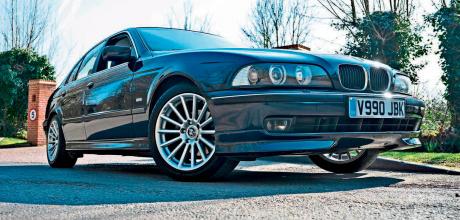2000 BMW 528i SE Manual E39
The E39 5 Series was long considered the ‘best car in the world’. Now a modern classic, it remains a popular choice for BMW enthusiasts – ably demonstrated by this 528i SE.
Words: Simon Jackson
Photography: Jason Dodd
Still The Best?
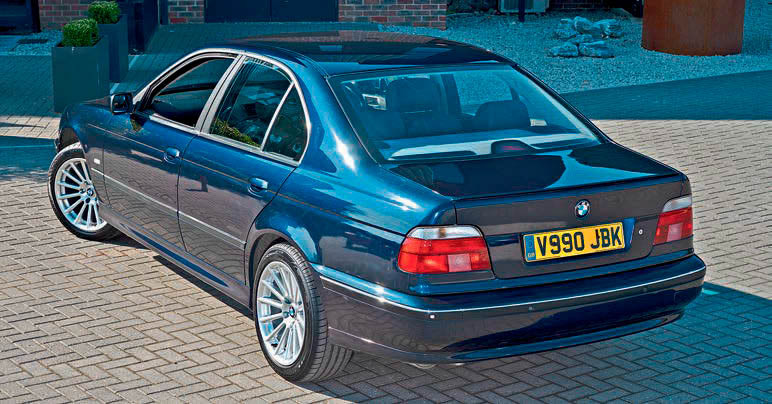
Unless there’s a real step change in automotive technology – think internal combustion engine to electric powertrain by way of a modern example, or a marked about-turn in manufacturer design language, car models tend to prove evolutionary rather than revolutionary. Pretty much any series model BMW you care to mention would largely prove this point but here we’re concerned with one in particular – the E39 5 Series.
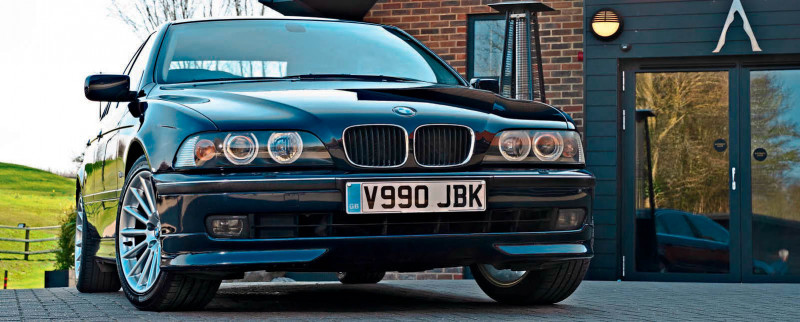
Without doubt, each and every 5 Series before and after has moved the story on, but the E39 was a rather special moment in time for BMW. Considered by many to be the ‘best car in the world’ even long after its introduction, you might assume that it had an easy act to follow allowing it to garner such high praise. That was not the case. The E34 that came before was everything but, however, be that as it may, when the E39 was revealed to the public in production form at the Frankfurt Motor Show in 1995 it was universally adored.
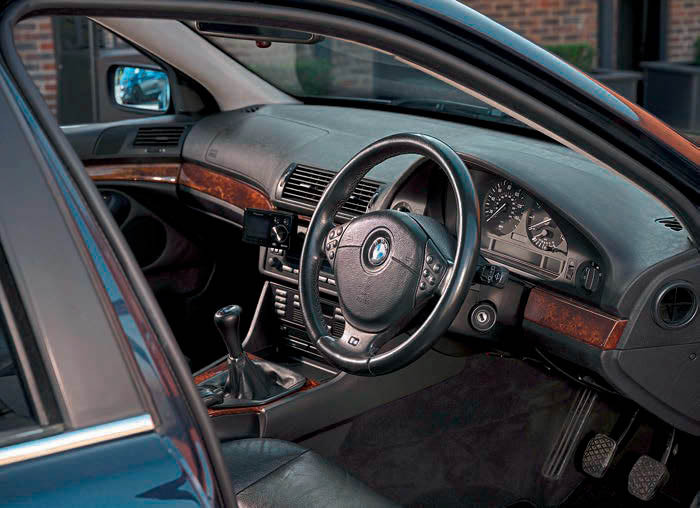
Certainly a large step forward over its forebear, both in design and, for many, aesthetics, the E39 managed to remain instantly recognisable as a BMW while also appearing fresh and exciting. Those trademark quad headlights up front were joined by a sleeker body that was larger all the way around – read longer, wider and taller. That translated to more room on the inside but this was no heavyweight as a result, in fact, somewhat incredibly, it was lighter than the E34 before it. Extensive use of aluminium, and lighter drivetrain components, were largely to thank for that. There was aluminium suspension too, the rear being BMW’s Z-axle multi-link affair, but the material’s use in the E39’s engines was perhaps more important. This 5 Series was the first large-scale production car in the world made almost completely of aluminium, and its all-aluminium engines added lightness to the recipe meaning weight savings were all but guaranteed. In the olden days, adding lightness often compromised stiffness, but thanks to CAD (computer-aided design) work, the E39’s shell was a full 50 percent stiffer than that of the E34. It was so rigid in fact that when it came time to create the E39’s replacement – the E60 – it was made no stiffer. Other firsts here? The six-cylinder E39s were fitted with rack and pinion steering, though the V8-powered cars made do with the less precise recirculating ball setup – this due to space restrictions rather than any cutting of corners. In fact, the E39 was generally advanced when it came to technology, its use of BMW’s five-speed Steptronic transmission, stability control systems, parking sensors, and satellite navigation included.
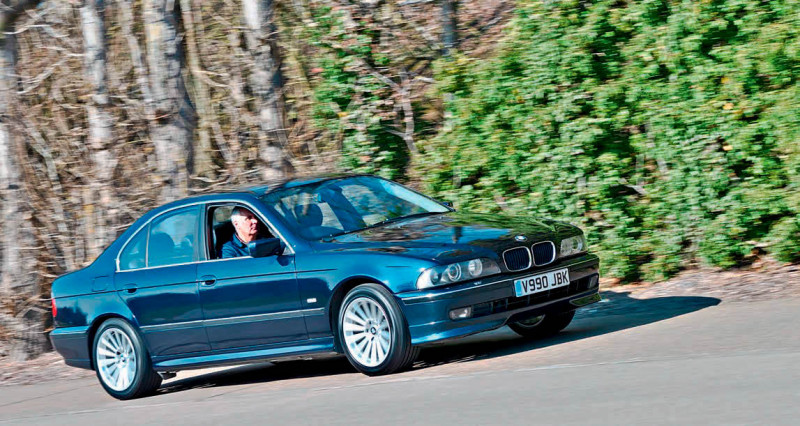
Engines were of the four- and six-cylinder variety, for the UK market every model boasted six-cylinders. The diesel-engined cars are worthy of attention for a number of reasons, not least because the E39 was blessed with the first performance diesel engine in the 530d, but these days it’s probably safe to say that the six-cylinder petrol-engined cars are the ones to covet. The straight-six petrol models available at launch were the 2.5-litre 523i and the 2.8-litre 528i, these were later joined by the 2.0-litre 520i. Power outputs ranged from 150 to 170hp. In 1998 came a major change in engine-line up. The updated M52 engine saw the adoption of double-VANOS variable valve timing and steel liners – ridding the E39 of the much publicised issues with Nikasil-clad engines. In late 2000 the E39 received a face- lift, those iconic ‘Angel Eye’ headlights, and, perhaps more importantly, the M54 straight-six arrived. The entry-level 520i model remained, albeit with a 2.2-litre engine now good for 170hp, the 523i was binned in favour of the 525i while the 528i was replaced by the 231hp 530i.
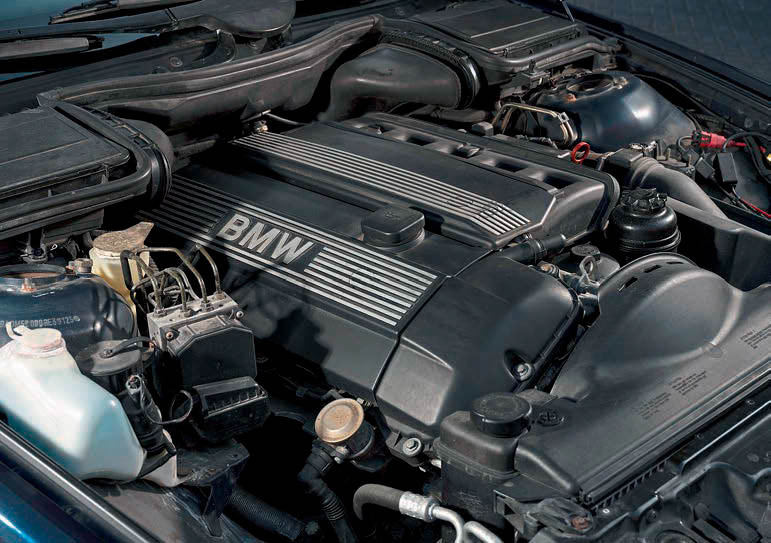
When it comes to specification levels, the two smaller engined models were available in entry-level trim, SE (Special Equipment) and Sport – available on the 528i and 530i. Initially, ‘Sport’ was a package that could be ordered with any other options, but it did not feature the M aerokit that became so popular when the E39 was sold as a Sport in its own right. This can lead to a bit of confusion today when sellers list their cars as ‘Sport’ models. It’s always worth doing some digging if such matters concern.
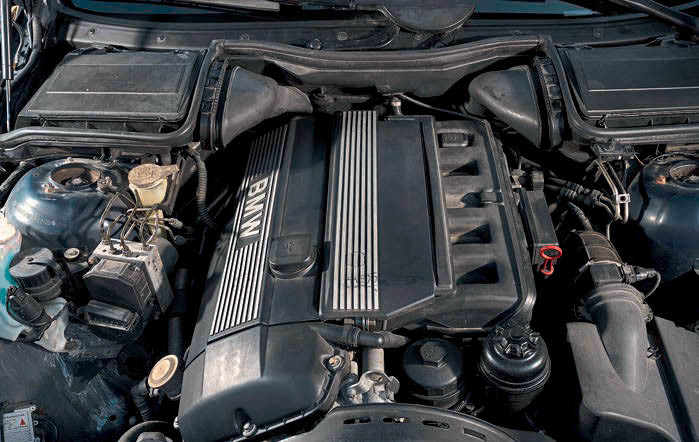
But, without doubt, the E39 is one of the most popular models in BMW history. When production ended in 2004, the E39 had set a new 5 Series sales record – a total of 1.47 million cars had been sold. Today, the E39 is considered by most to be a genuine modern classic, a popular choice for BMW enthusiasts and, amongst those well qualified to argue its corner, is Ray Lucas – owner of he 528i SE you see here.
Ray has owned this car for 13-years, but the reason that the 58-year old from Herne Bay in Kent has an opinion worth valuing so highly is not solely thanks to the length of time he has owned this car. You see, Ray is an expert on this subject as he has been a mechanic for some 42-years, the owner of his own business, he has been working on prestige cars and restoring classic two-stroke motorcycles in his spare time for decades – 11 at last count! And his credentials go further still, as Ray explained: “My background with BMWs is pretty extensive! I have owned three E30 325i SE – two-door models, a pair of E36 325i, an E46 318i Sport and two E39 528i 5 Series cars,” Ray smiled. “I have worked on BMWs, amongst most other prestige cars, for all of my working life as a mechanic.”
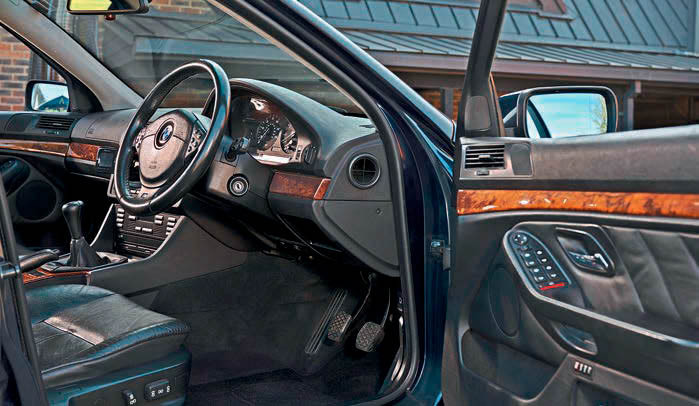
Ray was drawn to the E39 you see here as he, quite simply, thinks it is a really nice looking car. With that we’d have to agree.
“Even now it doesn’t look too dated and I’m always getting comments on what a nice looking car it is,” Ray said. “It is really comfortable and the dash looks great lit up at night.”
Ray’s year 2000 car was in very good condition when he bought it, and it remains that way 22-years on from when it rolled off the production line. The 528i SE boasts the full electric pack, memory seats and steering column, electric head rests – it’s full Special Equipment specification.
“The two E39s I have owned have been bullet proof, they are very reliable cars,” Ray enthused, “I have always kept this one polished, I have had a few bits of body work done over the years but, as a mechanic, I undertake all the repairs and servicing myself.” With that we can’t argue for who is better qualified for the task?
“The main aspects that I love about this car is the smooth suspension, and the engine sound – you can’t beat a straight-six and the torque the engine has means it is just a lovely car to drive. You wouldn’t know it is 22-years old.”
When we quiz Ray about whether or not this car is a current, or future classic, his answer comes swiftly:
“Yes! It is definitely a future classic, if it isn’t already. I think it’s up there with all the best 5 Series models,” Ray smiled. “Values are very varied so I don’t really know what these cars are worth at the moment, but I think they will increase. I intend to keep this car as I love it – if I were to replace it I don’t really know what I would buy,” we’re told.
Ray has tweaked his example a little over the years, but only with a few little touches to personalise it here and there – this is his daily driver, after all.
“I have fitted an M5 illuminated gear knob, a genuine BMW boot spoiler, and a small lower front spoiler. The wheels came off my old 5 Series, I am told they are quite rare.” Ray said. “It has a full leather interior, electric memory everything and it is manual, that means it is more fun stepping the back out!”
In his line of work, Ray gets to mix with BMWs of all types and ages, so he’s well placed to comment on where the E39 sits these days in the grand scheme of things. “The BMW scene today is still very strong in my opinion. I think there is a good following with the younger crowd in the older cars and classics. I have a few younger customers driving E46 3 Series and they love them. Also they are so much more reliable than some of the older cars,” Ray explained. “The newer BMWs are very much more refined, I work on lots of them, but I think there are too many distractions in the car and too many driver aids. I love my E39 as it is bare bones, and you can still step the back end out and put a smile on your face!” Very well said indeed, that man, very well said indeed…
TECHNICAL DATA 2000 BMW 528i SE Manual E39
- ENGINE: Six-cylinder, 12-valve
- CAPACITY: 2793cc
- MAX POWER: 193hp @ 5300rpm
- MAX TORQUE: 207lb ft @ 3950rpm
- 0-62MPH: 7.5-seconds
- TOP SPEED: 147mph
- ECONOMY: 29mpg
- WEIGHT: 1440kg
- PRICE (NEW): £30,910


